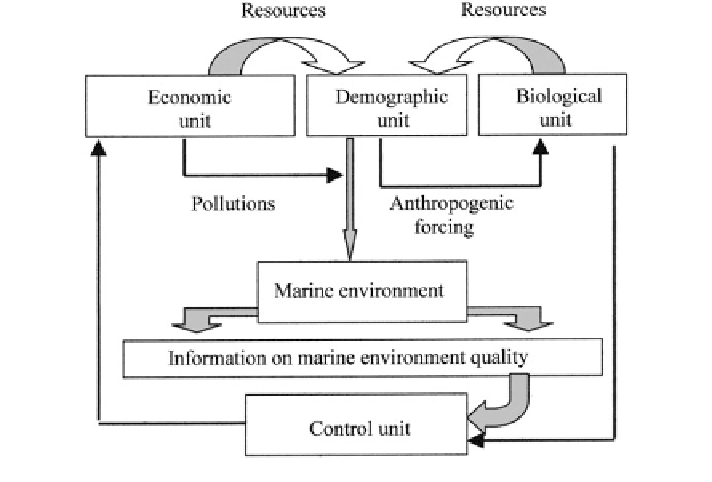Geoscience Reference
In-Depth Information
Following the method discussed in item 8.7.2 we write:
Y ¼ FY
1
; ...;
ð
Y
n
Þ;
ð Þ;
........................:
Y
ij
¼ F
ij
Y
ij1
; ...;
Y
i
¼ F
i
Y
i1
; ...;
Y
ini
Y
inij
;
........................::
Y
ij
...
k
¼ F
ij
...
k
Y
ij
...
k1
; ...;
Y
ij
...
nij
...
k
The EES functioning is assessed by the totality of the states of its elements. We
have Y
i
= 0 in case of scarcity of at least one of the resources used by the i-th
element or its quantitative characteristics do not meet the assumed criteria. Here the
interdependent pairs and chains of the system
s elements are taken into account.
The concrete structure of the model introduces certain corrections and special
features into the logical hierarchy of division of the system into sub-systems and
elements. Especially this is characteristic of the systems with the substantially
heterogeneous structure. These systems include also the marine EES with the
biological, economic and demographic units (Fig.
9.26
).
Here pollutions play the role of a negative resource. Information about the
quality of the marine environment and the state of the biota, that re
'
ects the impact
of economic activity on nature, enters the controlling unit of the model. This unit
compares and analyzes the information about the state of EES on the whole. With
fl
Fig. 9.26 Structural scheme of the model of the marine coastal ecotone (Khudoshina 1996)

Search WWH ::

Custom Search